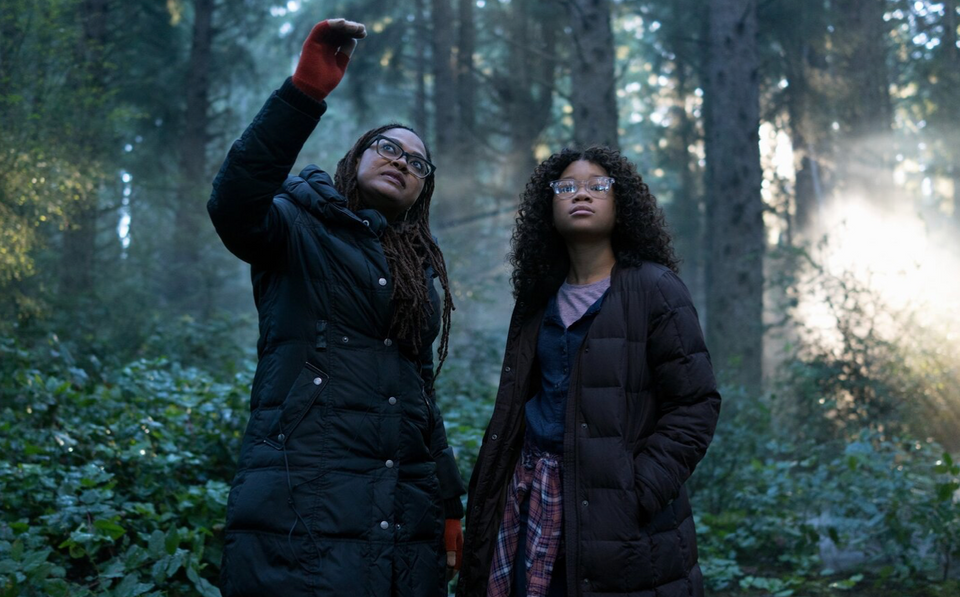It is strange that we come at it so sideways, so often. Brutal asides in Family Guy, the brushed steel gallows humor of stand-up punch lines, the deep horror in Chapelle’s Show so misunderstood, the strange complicity played for laughs in Key & Peele, a chronicle of suffering drenched in spite and cynicism in Ask A Slave.
So charged, still. Slavery—a hot potato for all Americans, black, white, and every shade in-between. You have to squint your eyes just right to get a glimpse of it. When was the last time in popular culture that somebody approached it directly in full sincerity?
To their credit, Steve McQueen, a Black British director with art-gallery pedigree and critical acclaim for previous films Hunger and Shame, and John Ridley, an African-American screenwriter, attempt this rare and singular task. Watching their latest effort, 12 Years A Slave, one is struck by how lonesome McQueen’s film appears in the theaters and electronic screens of American media consumption. The ‘peculiar institution’ is conspicuous mostly in its absence.
Consider the apparently inexhaustible appetite we have for World War II-as-commercial-product, still going all these years later, achieving what appears now to be permanent cultural cache. (Of course that war remains so tightly bound up with the American self-regard for its proper place in global affairs, continuing to comfort us with its seductive lies about ourselves post-September 11.)
Or consider the strange self-negation of a future apocalyptically shorn—the shambling zombie hordes blotting out our communal hopes like locusts the sun in a pop-culture wave that may now be just cresting – yet no less puzzling for its sudden coming and going, for its rich mining of an inscrutable vein in our current psyche.
Of greater consequence (and concern) is the retreat from the real evidenced by innumerable prequels and sequels from fantasy worlds, comic books, space operas and mythology. We are in the grip of incessant reboots and spin-offs, a witches’ brew of diminishing returns and special-effects exhaustion, the special hell of truly awful travesties making billions of dollars.
But slavery. You could drive a truck—many hundreds of trucks—through the gaping hole it leaves in American popular media. Does it have a chance of ever catching the zeitgeist?
Sure, Roots was an event in its day, and the occasional drama like Glory, The Color Purple, Amistad, and most recently, the vengeful Django Unchained keeps the coals stoked in certain cultural corners. But, taken as a whole, we have to go all the way back to Uncle Tom’s Cabin to find the last time slavery was so, well, enthralling to the entire nation as an artistic subject. How can this be, when slavery informs the entire backdrop of race relations in America? When it lingers behind so much of the dialogue around President Obama and the meaning of a black president? When in black America and white America slavery is always everywhere hidden in plain sight?
***
McQueen’s movie doesn’t provide any answers to these questions, but he is aware of these cruel interrogatives in American history. In fact, the entire film may be understood as an exploration of the irony of slavery as a system, its play of hiddenness-and-revelation, its intermingling of light and dark. For a director who promised to “not pull any punches,” the approach is oddly intellectual—a check dragging on the visceral experience of the protagonist, and, ultimately, a source of distance when immediacy was wanted.
The ironies begin early with an inversion of the comforting storyline preferred by white Americans: slavery to freedom, ideally through the mediation of some benevolent and brave Caucasian with which we can identify and invite into the circle as “one of us.” Here we have the opposite—and, lest we forget, the far more common, historically speaking—passage from freedom to bondage. Solomon Northup (Chiwetel Ejiofor), a born freedman from Saratoga Springs in upstate New York, lives a comfortable middle class lifestyle with his wife and children. A family man and musician, he is lured by the promise of short term but lucrative occupation while his wife and children are away on a trip, and is thus convinced to journey south to Washington, D.C. as a violinist for a traveling circus. Poisoned by his unscrupulous companions within sight of the nation’s Capital building, he wakes—horrifyingly—in chains, beaten until he accepts his new identity as Platt, a runaway slave from Georgia. Shipped to New Orleans, Solomon is sold as property to three different owners over the course of twelve years. The first, William Ford (Benedict Cumberbatch), is a paternalistic and sympathetic owner—the kind face slipped like a mask over an inherently brutal system. Soon, this brutality resurfaces in the persons of Tibeats (Paul Dano) and Edwin Epps (Michael Fassbender), Solomon’s second and third owners, respectively. He is the property of the deranged and troubled Epps for ten years, subject to his capricious whims and insane bouts of cruelty, until a smuggled letter to the North eventually wins the prematurely-aged Solomon his freedom.
Imagery of hiddenness, masks, and adopted personas abound. Most forcefully is the scene when Solomon is strung up by his neck for an entire afternoon in the hot Louisiana sun, on the tips of his toes, where any slip in his resolve or footing would ensure death by asphyxiation. Around his gasping form, life on the plantation continues as normal. Slaves keep on laboring, eyes on their work so fixedly, they avoid even furtive glances in Solomon’s direction. Children play in a sward meters from the lynching, apparently carefree and undistributed. The white overseer, although not responsible or approving of Solomon’s treatment, remains aloof and uninvolved. Equilibrium on the plantation is maintained through studied ignorance, through fearful refusal to acknowledge what is unavoidably there. Both as baleful witness to Northup’s experience and as a metaphor for the chattel system, the scene works awfully well. What was more foundational to the illusion that was slavery than to reject the humanity of the person standing right in front of you?
***
Ejiofor plays Northup with great nobility, a performance that relies on presence and heft and brooding interiority. He does much with his character’s sudden erosion of agency. Shorn of the privilege of moral action, he becomes a moral witness, instead—his watching eyes outraged, brutalized, an American Dante dragged through the underworld and returning to tell his tale. Fassbender’s Edwin Epps is a marvel, a man unbalanced in the extreme but never a caricature, a man of appetites and impulses beyond his understanding or control. Lupita Nyong’o does incredible work with Patsey, an unfortunate slave caught in a vicious triangle between Epps and his chilly wife. In the midst of unbearable circumstances, her Patsey manages to combine both royal grace and vulnerability—a woman whose gaze pierces and condemns.
There are powerful undercurrents, a sense of dread, inhumanity, and fear here. A mother is separated from her child in ghastly tears. Brutalizing violence prowls at the edges of every scene, warping the moral fabric of every character with its strange witchcraft. Northrup’s keen longing for his wife and children are gradually tempered by the horror of his own dissipation, of losing himself as Northrup only to be consumed by the new slave identity of Platt.
Yet at certain moments of great feeling, the director decides to pull back, to drop a veil. Twice, at least, Northrup turns his face away from the camera, his emotions hidden in shadow—in deference, perhaps, to the fact that none of us now, with all the distance of time and history between us, with a standard of living so high it would be impossible for even the richest in that era to fathom, could ever approach his horror. The slave is essentially unknowable, McQueen hints. The slave is hidden. Any attempt to psychologize or enter in is prima facie futile. Who can know, in the terrible solitude of his soul, the dark interior nights that passed while stranded on the edge of a hostile bayou with all the world against him?
***
I am not sure McQueen’s choices in this regard stand up to scrutiny. Turning to the real Solomon Northup’s memoir of the same name, one finds a whole world among the slaves on Ebbe’s plantation, distinctly rounded and sharply drawn personalities, with a great deal of the interior life of the slave on display. The reader is privy to hidden and hushed conversations, to moments of unguarded social intercourse away from the gaze of the slave master, to human quirks and foibles and the capacity for magnificence. We see slave society on a human level, grounded in real characters with real names, with histories and backstories and their own moments of moral triumph or failure. Northrup allows himself his own little asides and observations, even indulging in occasional visions of vengeance. But if the movie is your guide, Eppe’s slaves barely spoke to one another. Aside from Patsey, they are essentially nameless extras—background scenery. One is forced to conclude this distance is a deliberate choice on the part of the director, and the more you notice it, the odder it becomes.
Strange tableaux result: whips arcing gracefully through golden air, fields white with cotton edge-burned in the setting sun, black backs bent almost in supplication—in slow motion, nonetheless, in repose, like a Constable pastoral. The whipping post with its distracting movie-perfect puffs of blood. The awful torn flesh of Patsey, lit so lovingly it could be an abstract painting. Why such beauty? Why such grand painterly strokes? (One recalls McQueen’s art gallery roots, unfavorably.) Perfect cinematic brushwork like this betrays an artist’s inability to enter in, a willful intellectualizing damaging in its incapacity to plunge sincerely into an honest point of view. This becomes problematic when the camera detaches from Northup’s perspective and floats off into what is presumably intended as an ‘objective’ documentarian angle on the events. At these moments, the camera lingers on the outside of things. Troubling questions of point of view assert themselves: who is watching? Why? What particular interest, even complicity, do they have in this story?
What is left is the parade of ironies that is slavery mingling with the ironies of McQueen’s filmmaking: the white slave owner enslaved by lust for his black field hand; the many British actors in a film about the most American of topics; the man born free bearing the bondman’s yoke; the immaculate camera work capturing a sordid era; a religion of liberation used to pacify and oppress; a beautiful film about violence.
Despite its considerable merits, the film has a sense of the “almost-chosen” about it. Consider the heaps of praise it is receiving. Isn’t it sad, really, that critics are lauding it as such a watershed, a work of art at the head of a very short list of ‘serious’ slavery films? For a country that has not properly reckoned with slavery—despite eleven million human lives snatched from their homes and sent across the seas and the snuffing out of over six hundred thousand lives in civil war and over a century of legislation and countless marches and songs and lynches and speeches and gunshots in the night and bodies dumped in hate in Mississippi swamps and an incarceration rate that will send one in three black men born today to prison at some point in their lives and an education system that leaves only fourteen percent of black eighth graders reading at what is considered proficient and the exceedingly deep ignorance about each other that enfolds us still—it isn’t the film we might have hoped for, but it is the film we deserve. At any rate, it’s the best film about slavery yet produced. And it’s not even by an American!
Isn’t it a tragedy to say maybe that’s the best we can do?



